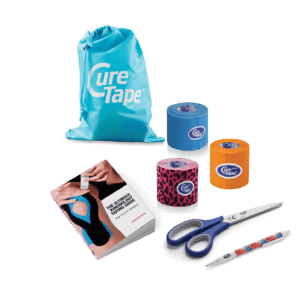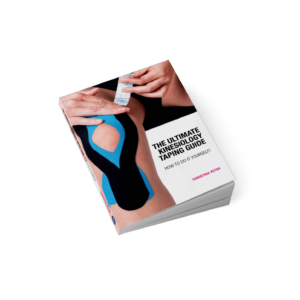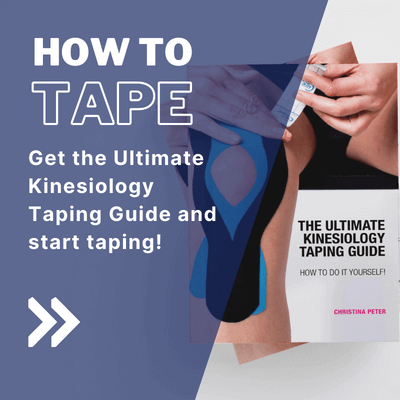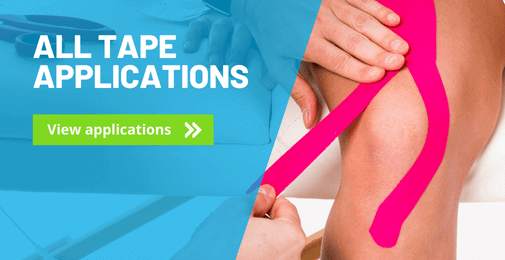Want to know how to tape for pain below the kneecap? Keep on reading on this page and you will learn how to do it all yourself!
Complaints below the kneecap are frequently caused by overuse, inactivity or an imbalance in the muscles responsible for bending and stretching the knee. These muscles are not inversely strong, which increases the pressure on the kneecap (patella). Do you frequently have pain under the kneecap after sitting for a long time, walking up and down stairs, or when standing up from a squat? Then the tape application described here can help you. It supports the sliding movement of the kneecap and therefore improves its mobility. Two tapes are applied for stabilisation. In addition to this treatment, the upper leg muscles should be strengthened through targeted strength training.
The application of the tape helps you to reduce pain and increase stability, so that you can move your knee more easily. It also helps to achieve an improved posture, as the upper leg muscles will be sufficiently strong to support the knee in its entire range of motion. With regular practice and commitment, the stability of the knee can remain intact even after the tape is removed.
How to tape for pain below the kneecap
Tips for a good knee taping application
- Is the cause of the complaint or pain clear?
- Check if there any contraindications for not taping.
- Before you start taping, carefully read the instructions.
- Choose a colour of tape, any colour that fits your mood!
- Round of all the edges to prevent peeling.
- Do not stretch the tape at the beginning and the end.
- Rub the tape well for adhesion. Heat activates the adhesive layer.
- Showering or swimming is possible, pat the tape dry after it gets wet. Do not rub it hard.
- It is easier to remove the tape with body or massage oil.

Christina’s advice when taping your knee
In the self-taping instructions, I have chosen taping applications that are easy to apply yourself. In order to make this treatment safe, I give practical tips, which you should take into account before, during and after a tape treatment. They are based on my years of practical experience. If the complaints persist, always consult a therapist or doctor.
Preparation for taping the kneecap
Tape
Shape: Y-Tape (long base).
Number of strips: 2.
Technique: Muscle technique (slight pull).
Measuring and cutting the tape
Step 1:
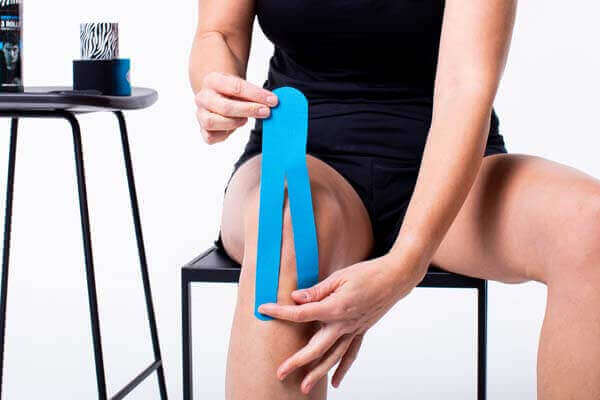
Sit on a chair and measure the length of the bent-knee tape from the middle of the thigh to the bottom of the knee. You will need two tapes, each cut in half lengthways to give two Y-shapes with a base and two long strips.
Applying the tape below the kneecap
Step 1:
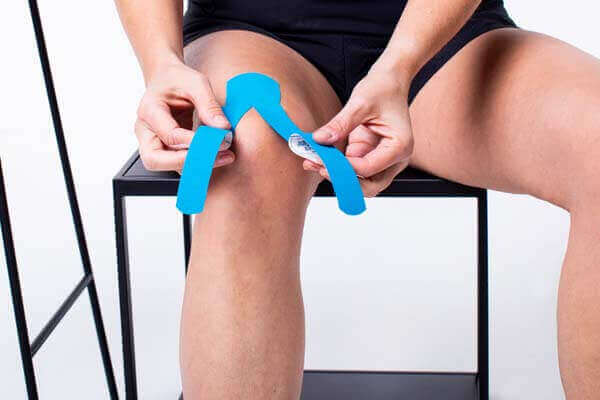
Step 2:
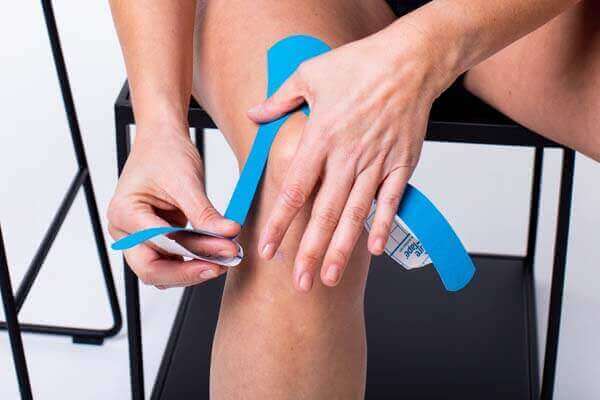
Step 3:
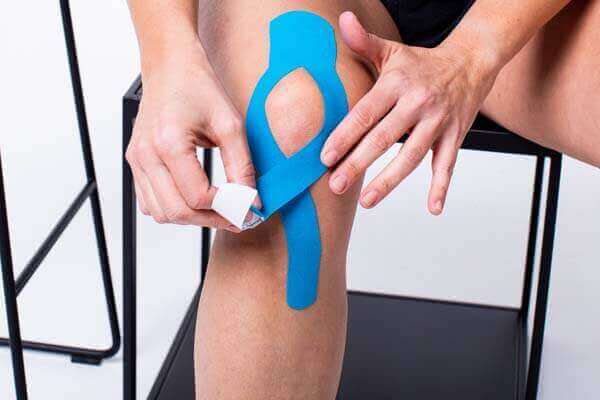
Step 4:
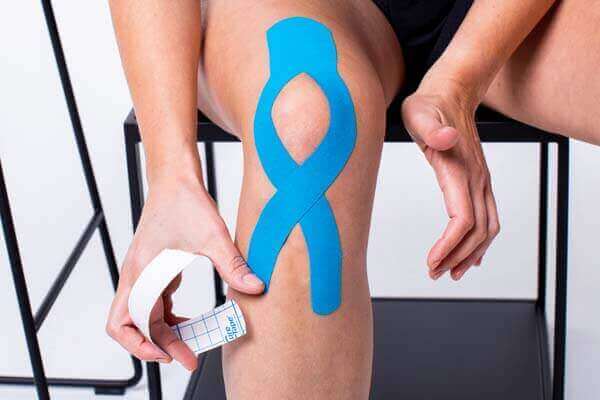
Step 5:
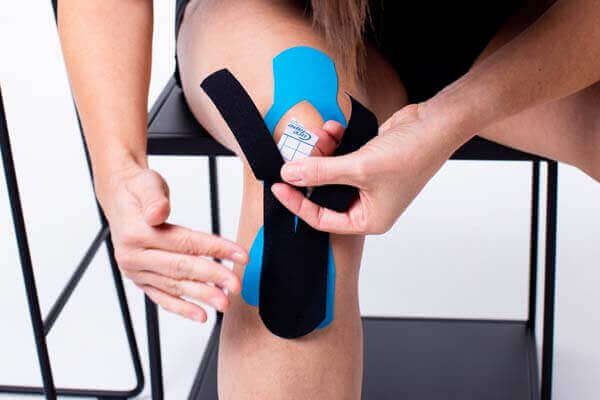
Step 6:

Step 7:
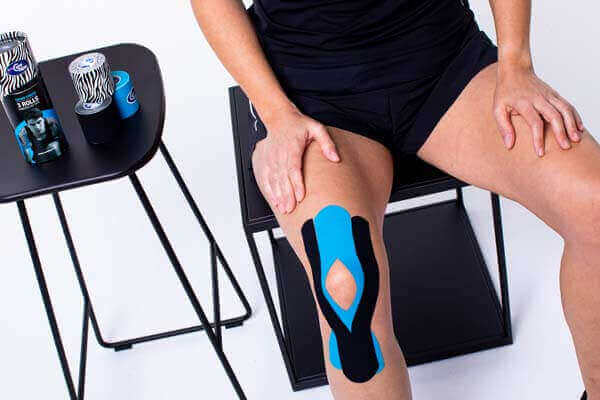
Applying the first tape
- If possible, keep the knee flexed at a 90 degree angle throughout the treatment.
- Carefully tear the release paper where the two strips start. Place the tape on the upper edge of the kneecap and place the base of the tape on the thigh.
- After you have secured the base, apply the two separate strips with a slight stretch, on both sides, along the kneecap. Rub the tape on well.
Applying the second tape
- Place the unstretched base one hand width below the kneecap, and apply the two strips as the first tape with a slight stretch around the kneecap, finishing with the base at the side of the thigh.
- The anchors of the second tape should not end at the base of the first tape, but have contact with the skin. This ensures better fixation.
Learn how to tape
- 30 taping instructions for common injuries that taping can help you with
- 176 pages of clear written instructions
- 200 step-by-step instructions accompanied by photo’s, illustrations and scannable video’s through QR codes
What are you waiting for? Order your copy today!
*This book is intended for people who want to tape an injury or complaint themselves. If uncertain about the complaint, consult a physiotherapist.
THYSOL is the manufacturer of the kinesiology tape brand CureTape. As CureTape, we have been training and supplying professionals for almost 25 years. And consumers now know how to find us too! By manufacturing all our tapes in our own factory, we can guarantee the best quality!
Please note that the indicated tape applications and information on our website about the possibilities with kinesiology tape have not yet been scientifically proven. The statements and examples mentioned are based on long-term experiences of patients and trained therapists.
Contraindications not to tape: pregnancy, open wounds, broken bones, unexplained complaints, allergies and skin diseases, use of medication such as blood thinners, thrombosis and fever. Always apply tape in consultation with a specialist.

